Do You Need to Put Water in a Crock Pot? (Role of Liquids and Sauces)
Most people understand that you need to have water or some other liquid in a crock pot to help properly cook your food. While most crock pot recipes will include a liquid component such as a sauce or even just plain water, adding this yourself might be a little less obvious.
Do you need to put water in a crock pot?
It is critical to include water or other liquids such as sauce or broth in a crock pot to help evenly distribute heat, prevent food from drying out, improve the flavor, and tenderize meats. Depending on the dish, you can add broth, wine, sauce, or just plain water as the liquid component in your crock pot.
Now, let’s get into the details!
Why do you need water or other liquids in a crock pot?
To get the most from your crock pot, always pay close attention to the recipe instructions and be mindful of the amount of liquid required. Remember, the key is to strike a balance between allowing the food to cook slowly and evenly while avoiding soggy, over-hydrated results.
With practice, you’ll soon master the art of crock pot cooking and impress your family and friends with delicious, flavorful meals.

Role of liquid in a slow cooker
When using a crock pot or slow cooker, adding liquid is often necessary for several reasons.
First, the liquid provides the necessary environment for the food to cook, break down properly, and become tender. During the slow cooking process, the liquid helps to break down tough connective tissues and extract flavors from the ingredients, creating a delicious and flavorful dish.
Secondly, the liquid prevents the food from drying out during the long cooking time, ensuring a moist and tasty result.
Heat distribution and even cooking
Another important role of liquid in your crock pot is to facilitate heat distribution and even cooking.
The presence of liquid conducts heat more efficiently and evenly throughout the food as opposed to cooking in a dry environment. This helps to prevent hotspots or overcooked areas in your meal. The combination of this efficient heat distribution and the low-temperature setting of slow cookers/Crock-Pots works to create a perfectly cooked dish every time.
Remember that the amount of liquid required in your crock pot will depend on the specific recipe and the ingredients used. Some foods, such as ham, may not need any added liquid, while others, like stews and soups, will require water or broth.
Be sure to follow the recipe instructions or use your own judgment to determine the appropriate amount of liquid for your dish.
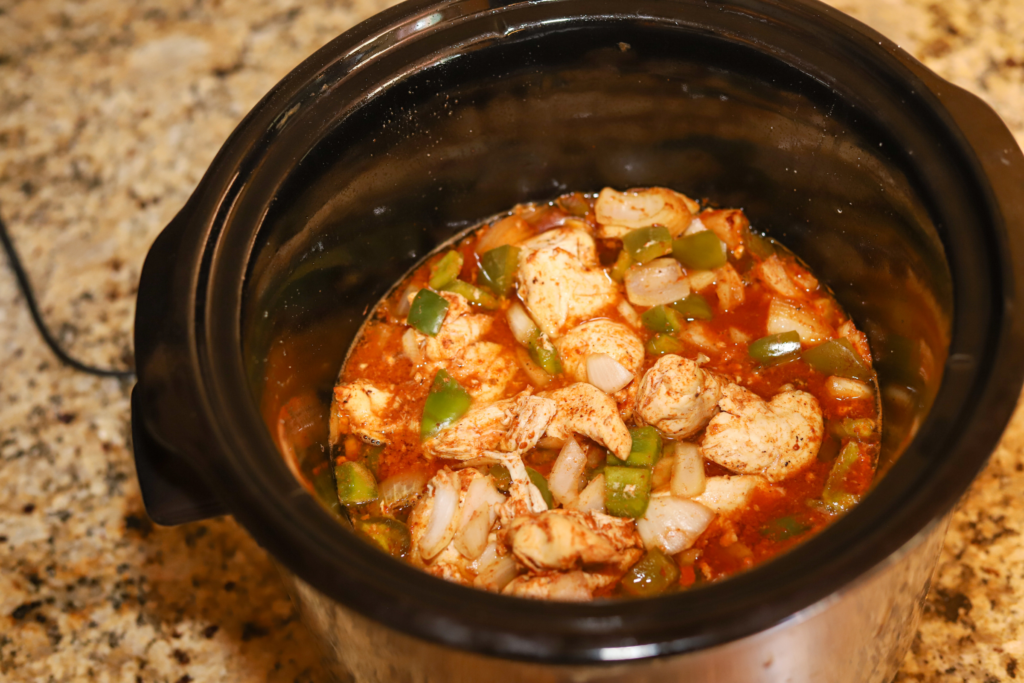
Choosing the right type of liquid for your crock pot recipe
In this section, we’ll explore the different types of liquids you can use in your crock pot recipes, including:
- water
- broth
- wine
- sauces
Water and its uses
Water is a common liquid used in crock pot recipes, especially when cooking vegetables or grains. It’s important to remember that slow cookers require significantly less water than stovetop cooking methods. Too much water can dilute the flavors of your dish, so only add the amount specified in the recipe.
Different types of broth
Broths are another popular choice for adding liquid to crock pot recipes.
They come in various forms, such as:
- Chicken broth: Ideal for poultry dishes and can help enhance the flavor of your ingredients.
- Beef broth: Use this for beef-centered meals, as it adds a deep, savory taste.
- Vegetable broth: Suitable for vegetarian or vegan dishes, providing a subtle and balanced flavor.
Remember to choose a broth without added salt if you’re watching your sodium intake.
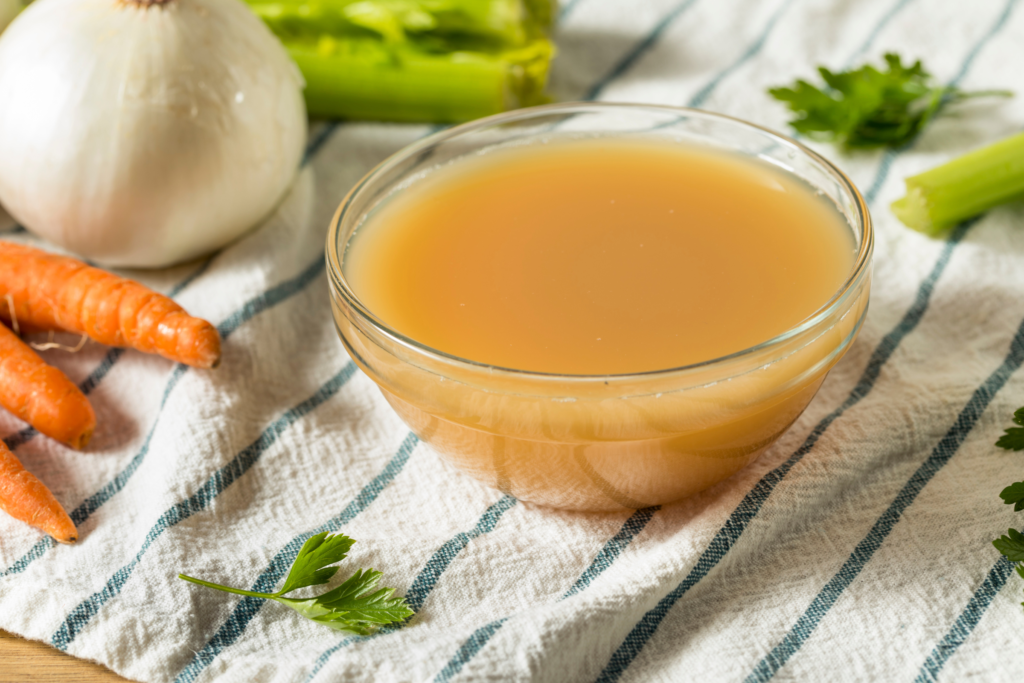
Wine and sauce as alternatives
Aside from water and broth, you can also experiment with:
- Wine: A suitable addition to many recipes that bring depth and complex flavors. Red wine works well with beef dishes, while white wine pairs best with chicken or fish meals. Use a small amount, as strong wines can overpower your dish.
- Sauces: Options like tomato sauce or cream-based sauces allow you to create a rich and flavorful base for your recipes. Be mindful of the sauce’s consistency and adapt the recipe accordingly, as overly thick or thin sauces may affect cooking times.
By selecting the appropriate liquid for your crock pot recipe, you can elevate your dish’s flavor and achieve a successful, delicious meal.
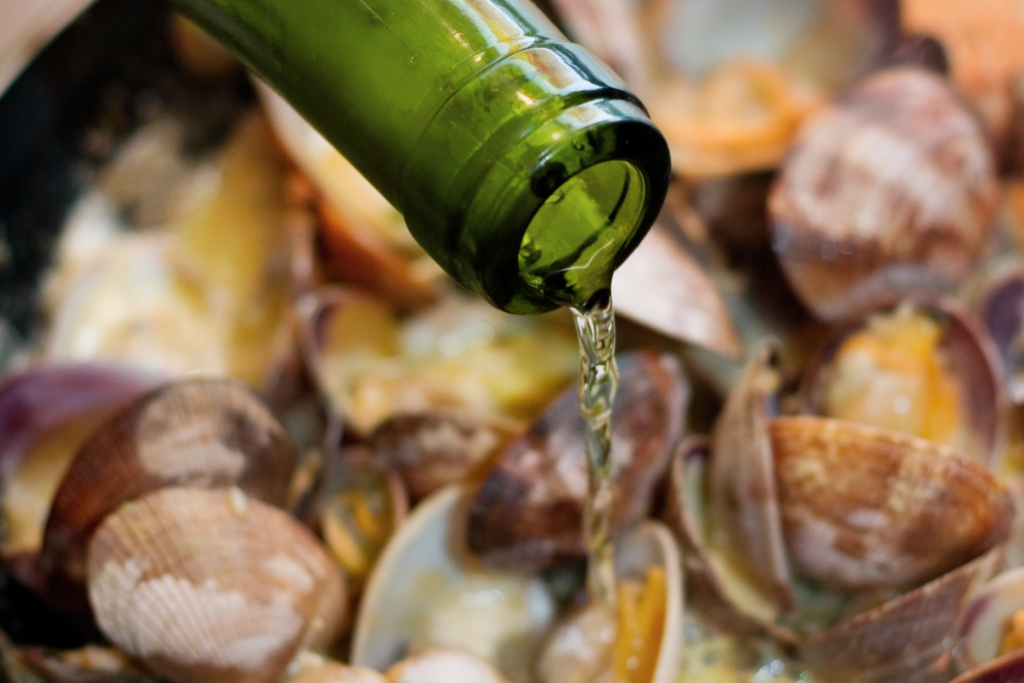
Cooking meat properly in a crock pot
When cooking meat in your crock pot, choose cuts with more fat and connective tissue, such as chuck roasts, short ribs, pork shoulders, and lamb shanks. The low, moist heat of slow cooking will help break down these tissues and result in tender, mouth-watering dishes. Remember to trim off any excess fat before adding the meat to your crock pot to prevent your meal from becoming too greasy.
While browning the meat before adding it to the slow cooker is not always necessary, doing so can add depth of flavor and enhance the appearance of your finished dish. Lastly, avoid overcooking the meat by following recommended cook times for the specific cut you’re using.
Incorporating vegetables in the crock pot
When adding vegetables to your crock pot recipes, keep in mind their cooking times and placement within the pot. Root vegetables, such as potatoes and carrots, take longer to cook than softer veggies like peppers and zucchini. To ensure even cooking, place denser vegetables at the bottom of the crock, closest to the heat source.
If a recipe calls for quick-cooking vegetables like peas or spinach, add them during the last 30 minutes of cook time to prevent overcooking. This will ensure that the vegetables retain their color, texture, and nutritional value.
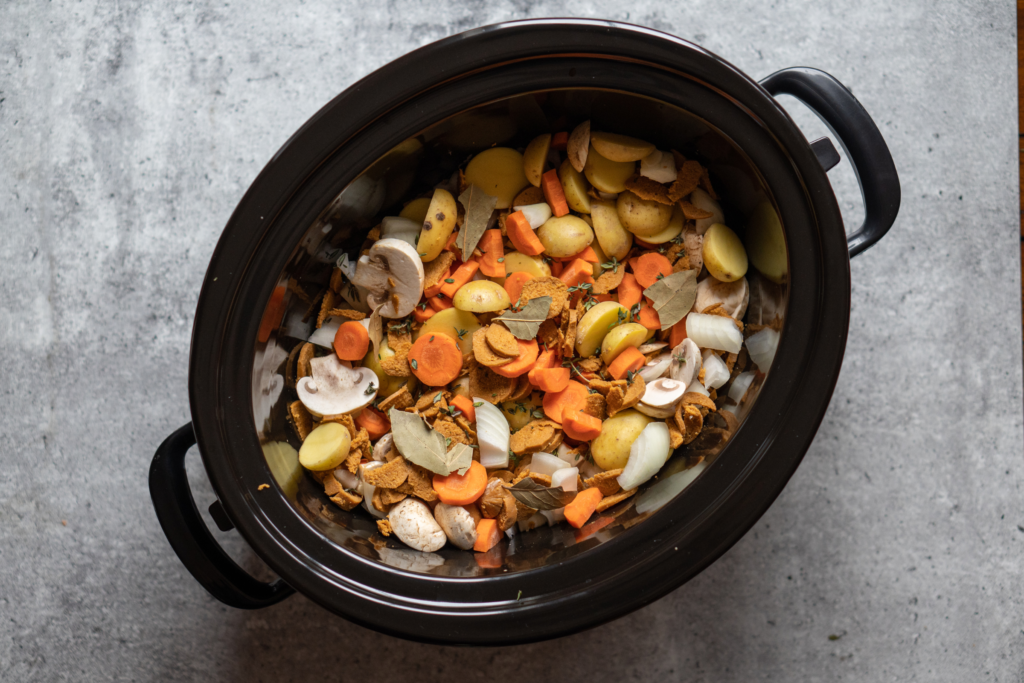
Advice for cooking soups and chili in the crock pot
When making soups and chili in your crock pot, be mindful of the liquid levels. While the lid of the crock pot helps to recapture most of the steam, you may need to adjust the amount of liquid called for in the recipe, as there will be less evaporation than with stovetop cooking.
As a general guideline:
- For thicker soups and chili, use less liquid than the recipe calls for.
- For thinner or broth-based soups, stick to the recommended amount or slightly increase it to account for any absorption by ingredients like rice or pasta.
Remember, it’s easier to add more liquid later in the cooking process if needed, so start with less and adjust as necessary.
Preventing common Crock pot issues
Crock pots are a convenient and easy way to prepare meals, but they can also present some common issues that can result in unsatisfactory results.
Avoiding overcooked and dry food
To avoid overcooking or drying out your food, be sure to pay attention to the slow cooker’s cooking times and temperature settings. For instance, opt for low temperature settings when dealing with tender cuts of meat or delicate dishes like fish.
Remember, thicker cuts of meat are better suited for slow cooking as they tend to become juicier and more tender over time. Additionally, when cooking meat, consider using fattier cuts like beef pot roast or pork shoulder roast as they retain moisture better than leaner cuts.
Cooking frozen meat safely
When cooking frozen meat in your crock pot, it’s essential to ensure that it reaches a safe internal temperature.
Here are a few steps to follow:
- Thaw your frozen meat in the refrigerator before placing it in the crock pot. This helps reduce the risk of bacterial growth.
- Use a meat thermometer to check the internal temperature of the meat towards the end of the cooking process. Poultry should reach at least 165°F, while beef, pork, and lamb should reach a minimum of 145°F.
- Do not place frozen seafood directly into the crock pot, as it can cause uneven cooking and affect the texture of the dish. Thaw the seafood in the refrigerator and cook according to your recipe’s instructions.
Prevent cracked crock pots
A cracked crock pot can be a significant issue, potentially damaging your heating base or even posing a fire risk. To avoid this, keep the following tips in mind:
- Inspect your crock pot regularly for any signs of wear or damage, and replace it if necessary.
- Ensure the pot is properly seated on the heating base before switching it on.
- Avoid exposing the crock pot to sudden temperature changes, such as placing a hot pot in cold water or placing a cold pot on a hot heating base.
- Regularly clean your crock pot and heating base to prevent buildup of residues that could cause damage.
By following these guidelines and keeping a vigilant eye on your crock pot and the cooking process, you can prevent many common issues and enjoy delicious, perfectly-cooked meals in your slow cooker.
Tips and tricks for using your crock pot
To get the most out of your crock pot and make the tastiest meals possible, you’ll need to learn a few tips and tricks:
- Layering ingredients effectively
- Using aluminum foil raisers in a slow cooker can help
- Adjusting cooking time for various foods
Layering ingredients effectively
When using your crock pot, it’s important to layer the ingredients properly for even cooking.
Start with the dense vegetables, like carrots and onions, at the bottom of the pot. Then, add your protein (such as chicken breast, beans, ham, or pot roast) on top of the vegetables, making sure they are not submerged in the liquid. This allows them to cook more evenly and soak up the flavors from the other ingredients.
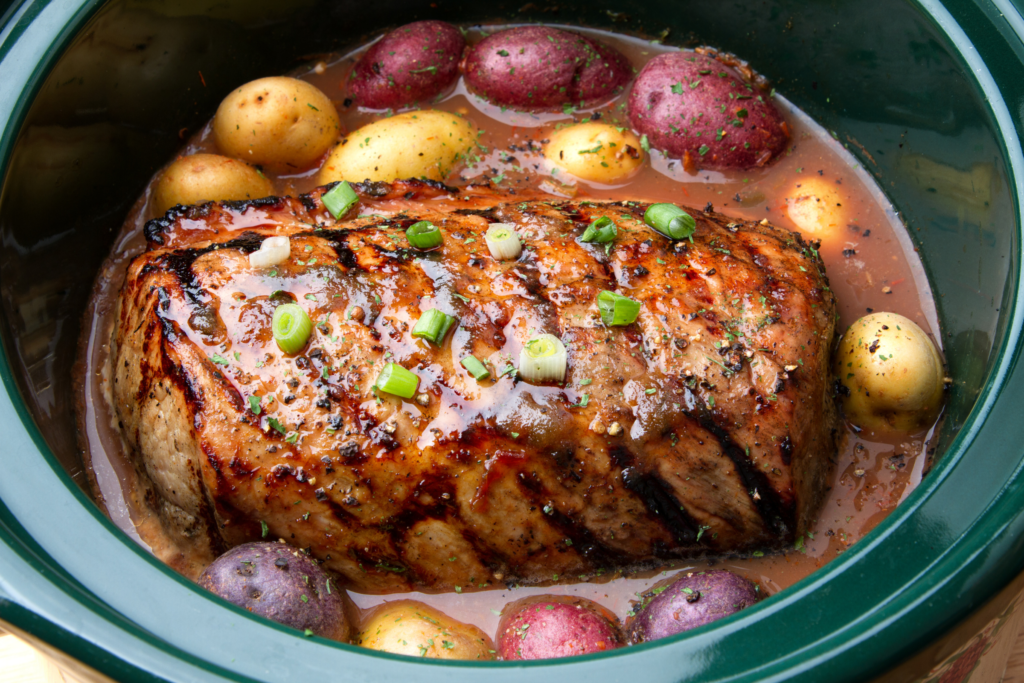
Using aluminum foil raisers in a slow cooker can help
To ensure even cooking in your crock pot, particularly when cooking large cuts of meat or poultry, try using aluminum foil raisers.
To do this, simply bunch up pieces of aluminum foil, create small balls, and place them at the bottom of the pot. Place your protein on top of these foil balls, which will lift it slightly and allow for better heat circulation, promoting even cooking.
Adjusting cooking time for various foods
Different ingredients require varying cooking times, so keep an eye on your cooking pot to make sure everything cooks evenly.
- Chicken Breast: Depending on the size, cook on low for 6-8 hours or high for 3-4 hours.
- Beans: If dried, pre-soak them for at least 4 hours. Then, cook on low for 5-7 hours or high for 3-4 hours. Canned beans can be added during the last hour of cooking time.
- Carrots: Cook on low for 6-8 hours or high for 4 hours.
- Onions: Cook on low for 4-6 hours or high for 2-3 hours.
- Ham: Cook on low for 8-10 hours or high for 4-5 hours.
- Pot Roast: Cook on low for 8-10 hours or high for 4-5 hours.
- Bread: Cook on high for 1.5-2 hours.
Remember, these cooking times are approximate, so it’s always best to check your food periodically to make sure everything is cooking evenly and to your desired texture.
Let Us Know How We’re Doing!
Did this expertly prepared resource answer your question?
Do you have another question about home maintenance, home improvement projects, home appliance repair, or something else?
Get more information, send in questions and keep the discussion going by contacting the I’ll Just Fix It Myself company customer service team at at 1-800-928-1490 or Email us at [email protected]
